What Does Chapter 11 Bankruptcy Entail?
Chapter 11 Bankruptcy is often called a reorganization for those that file. Typically, Chapter 11 allows those that file the time necessary to restructure debts, assets, and more to provide a clean slate or a fresh start. Chapter 11 is to preserve the entity or individual, as remaining operational is of more value than liquidation.
Chapter 11 Bankruptcy may be more common than you think, as some of the big names that you frequently hear about may have filed in the past. Typically with how the bankruptcy is structured, companies can remain open for business, so you may not be aware of their bankruptcy filing.
In some cases, individuals will file for Chapter 11 as well. Individuals with significant debt that don’t qualify for Chapter 7 Bankruptcy may choose to file for Chapter 11. It is less common for individuals than businesses to file for Chapter 11.
What are First-Day Motion Filings?
The first step to the Chapter 11 Bankruptcy process is the first-day motion filings. During this step, the debtor is present in court to discuss and file timely requests that, without, may run the risk of financial ruin for the business or individual.
Through this process, the debtor requests to preserve their company’s or assets’ value to avoid further debt collection attempts through an “automatic stay.” An automatic stay is a legal provision that prevents creditors or collection agencies from pursuing debt while the debtor exercises the process of Chapter 11. Government entities can also not pursue collection when the automatic stay is enforced.
Automatic stays protect the debtor from foreclosure, liens, or repossessions. This process takes place to preserve the business or assets so the debtor has a chance to rebuild. If this step were not taken, the debtor would be at risk of losing value, thereby negating the process of restructuring that Chapter 11 provides.
Next Steps in First-Day Motions
The debtor will file motions to the court for approval. Generally speaking, these motions involve provisions allowing the business to remain functional to continue to incur revenue rather than financial distress.
One of the most common motions filed is the “critical vendor motion,” which allows debtors to satisfy specific vendors and suppliers that are proven to be critical to continue operating the business.
Typically this motion is granted to preserve the business’s ability to continue its day-to-day operations, such as receiving goods from their suppliers or vendors to continue generating revenue.
Oher Common Motions Filed in First-Day Motions
Another common motion filed by debtors is the motion to use cash collateral. For purposes of Chapter 11, cash collateral is defined as cash and the cash equivalent of quickly liquidated assets such as accounts receivable or inventory.
Approval of this motion also ensures that the business can remain functional and that other critical components of running the business are an option.
Final Motion Typical on First-Day Motions for Chapter 11
A motion to pay pre-petition payroll is another crucial piece of the puzzle. By preserving cash collateral, as previously mentioned, businesses can provide their employees with payroll earned. By doing so, they can maintain the employees on the payroll, helping to ensure that the company can remain functional and stay afloat.
Without this process, you can easily assume that employees would likely leave, making the operation of the business difficult to impossible and negating the effects of the Chapter 11 filing.
Advantages and Disadvantages of Filing Chapter 11 Bankruptcy
One of the biggest advantages or reasons that Chapter 11 is found appealing is that it allows the debtor to remain in control and functional, thereby allowing them to continue to generate revenue. Cash flow can continue, orders can be filled, employees can be paid, and more.
Most creditors find Chapter 11 more appealing than other options, such as an entity filing for Chapter 7, as they stand to obtain more of the debt they are owed. If Chapter 7 is pursued, most debts are liquidated, leaving creditors on the hook for a larger portion of the amounts owed.
Some of the disadvantages of filing for Chapter 11 are the costs incurred, the lengthy timelines that can occur, and the complexity of the process. Debtors must be prepared to follow strict provisions set in place by the courts to reorganize debt and sufficiently pay off debt promptly.
As you can imagine, for those companies or individuals facing financial stress enough to consider filing for Chapter 11, the costs incurred during the process may be tough to swallow. However, the alternative may be even less appealing.
How Can a Bankruptcy Attorney Help Me?
If you are like most people, you aren’t well-versed in bankruptcy. The process of any of the filing options can seem daunting at best for those that don’t have experience in the challenging process. Bankruptcy attorneys are skilled in this area and can provide a calm and logical approach to a stressful situation.
With decades of experience helping businesses and individuals navigate difficult decisions and the bankruptcy process, we are confident in bringing some necessary stress relief when you need it the most. We can work with you to decide which options are best and hit the ground running to begin filing for bankruptcy effectively.
“Time is money” is a phrase that may mean more to you now than ever before. Let us help you take the first step.
Contact our office today at (718) 522 1117 to get the process started and get you back to doing what you do best without the weight of your debt on your shoulders.


